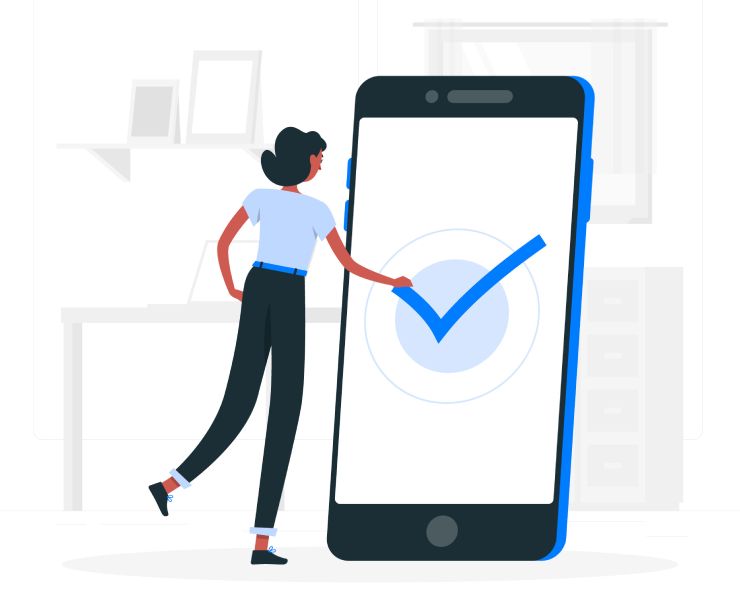Rapid digital transformation driven by IoT, artificial intelligence comes with a heavy cost and has particularly fueled cyberattacks. The ongoing shift to online platforms has created massive opportunities for scammers to access your systems and commit cybercrimes.
The need for cybersecurity measures rang high in 2021 when the industry faced fires led by massive SolarWinds hack and vulnerabilities in Microsoft Exchange. These ever-growing attacks have led organizations to focus on cybersecurity trends and mitigate the risks effectively.
Let’s evaluate how worst the bugs are going to be in the upcoming years.
8 Cybersecurity Trends For 2022
To get ready for what’s ahead, consider these trends to build an idea about what to expect in 2022 in terms of cybersecurity.
- A rise in ransomware attacks
- Threat to supply chain attacks
- AI-powered cybersecurity controls
- Growth in IoT service market
- Blockchain to turn as a common cybercrime vector
- Increasing mobile threats
- Evolving role of company security leaders
- Threats to Educational Institutions
- A rise in Ransomware Attacks
According to reports, “The average amount of ransomware transactions per month in 2021 was $102.3 million.”
Ransomware attacks are on the steady rise and seem to be a major contributing force in the cybersecurity industry. The year 2021 saw the largest ransomware attacks of all time including the SolarWinds attack and the Colonial Pipeline attack that wreaked havoc across North America. The attacks are up by 148%, which can be attributed to remote working or rapid digitization promoted by the pandemic.
Ransomware attacks occur when scammers use malware to access and steal data from the victim’s system. It is malicious software that invades a computer, encrypts the file, limits access to the data, and puts them at risk to destroy them unless a ransom is paid.
Phishing attacks are the most common ways through which a ransom is deployed where employees of the company are asked to click a link or provide details. Once employees have clicked on this link, guess what? They’ve got tricked as the link will download the ransomware software.
Taking into consideration the alarming cases, companies must reevaluate their cybersecurity measures and establish firm policies.
- Threat to Supply Chain Attacks
The Covid-19 restrictions made companies face several supply chain bottlenecks. Supply chain attacks are not just limited to the IT industry; they affect the pharmaceutical sector, large retailers, the manufacturing industry, and more. Cybercriminals consistently seek blind spots or blockages to take advantage of. They often target vendors or organizations with lax security measures.
Ransomware attacks are of the top concern for those dealing in supply chain management as they have the ability to impact huge databases with a single breach.
“The number of supply-chain ransomware attacks isn’t likely to abate over the next 12 months either,” said Deepen Desai, CISO and vice president of security research and operations at Zscaler.
To prevent such attacks, companies should look toward more secure tools such as email security, Microsoft’s OS, and cloud computing software. This will reduce the threat to spear-phishing attacks and eventually mitigate the risks of cyberattacks.
- AI-powered Cybersecurity Controls
AI and machine learning have become vital tech tools in information security. They are essential to curb severe attacks as they can analyze and identify malicious events or threats in real-time. They can detect suspicious behavior in the transactions, determine malware exploiting the database and prevent systems from vulnerabilities.
Amid rising cyberattacks, AI tech tools prove to be a productive investment for companies as they can automate malware detection and respond to hacks more efficiently than traditional security approaches.
- Growth in IoT Service Market
The market for connected devices or the internet of things (IoT) is consistently growing and is expected to reach 18 billion in 2022. Wide acceptance and usage of IoT devices create numerous entry points, allowing cybercriminals to access digital systems easily. Hackers can get access to computers/phones through connected appliances such as fridges. Fraudsters with nefarious intentions reach these systems and steal the valuable data stored there.
Prior to getting IoT fixed to your places, you should perform a careful audit, determine the potential threat posed by these devices.
- Blockchain to Turn as a Common Cybercrime Vector
Cryptocurrency theft increased 516% from 2020 to $3.2 billion worth of cryptocurrency.
Digital currencies have always been a threat having less barriers to entry. Cryptocurrencies are considered as the widely adapted investment means, implying there will be numerous investors who might not know how to deal on the platform. Such investors can easily become a victim of identity theft or data breaches. Fraudsters can steal tokens or coins by accessing through fake identities or stolen private keys.
To navigate the threats of crypto-related frauds, companies can reach identity verification services and
- Increasing Mobile Threats
Mobile phones have become a key part of every task performed, whether it be for company purposes or unofficial tasks. People are increasingly using smartphones for banking, shopping, entertainment subscriptions, communication, ticket booking, and more. This makes them an easy target for fraudsters to commit cybercrimes.
Cybercriminals are using mobile devices to steal credentials and gain access to business networks and company databases. This is done through phishing attacks by asking employees to open the message or download the malicious mobile application.
Companies should aim at integrating ID verification solutions to their systems and performing multi-level authentication to build stringent systems that won’t get affected by cyber attacks.
- Evolving role of company security leaders
Cybersecurity is a concern for businesses, irrespective of their niche. According to a report, 57 percent of companies ranked cybersecurity as a higher risk than economic uncertainty and brand reputation.
This evidence that the need for chief security leaders has become more crucial than ever. With the companies transitioning to digital platforms, the role of security leaders has evolved. The influx of increased cyberattacks raises the demand for security training. In addition, to implement security measures at the workplace, they also need to manage a remote workforce.
To experience a cutoff, resources such as employee devices and accounts must be secured well. Security officers should maintain a balance between the company’s security measures and its strategies/policies. They can organize training programs and perform knowledge-sharing with the team.
- Threats to Educational Institutions
The pandemic has urged almost every sector to shift to digital means. With the rise in e-learning and remote work, schools, universities, and research centers make for major targets for cybercriminals. Any loophole in the system will give them a chance to steal student data. Scammers can also access essential user databases by logging in through fake IDs or stolen passwords. They target organizations with phishing attacks and manipulate teaches to give personal information and tax details.
This calls for higher educational institutions to tighten their security for safeguarding data of students, and faculty. To mitigate the risks of data breaches, learning institutions can integrate leading identity verification solutions. This helps to verify that the user logging in matches the company database.



